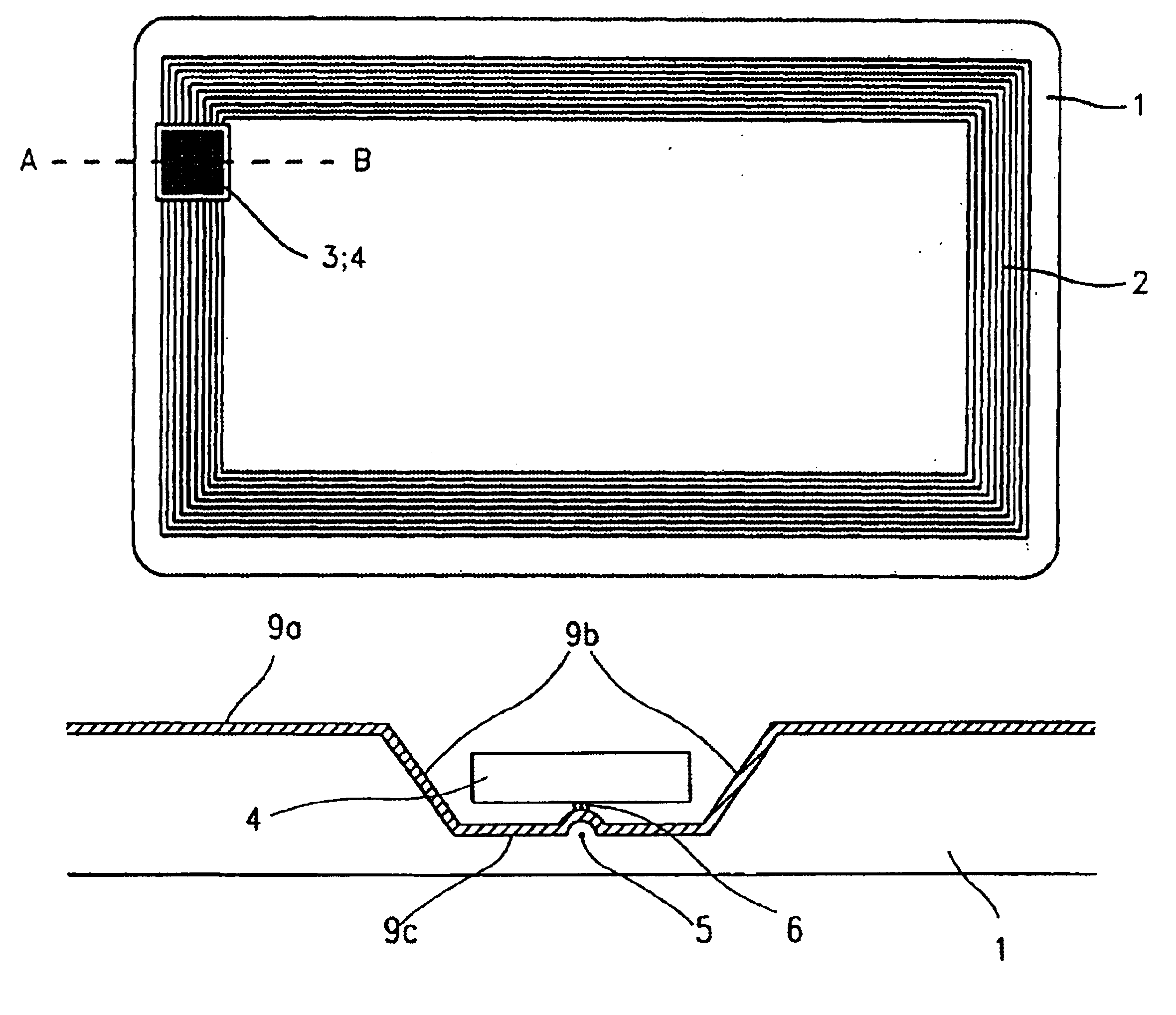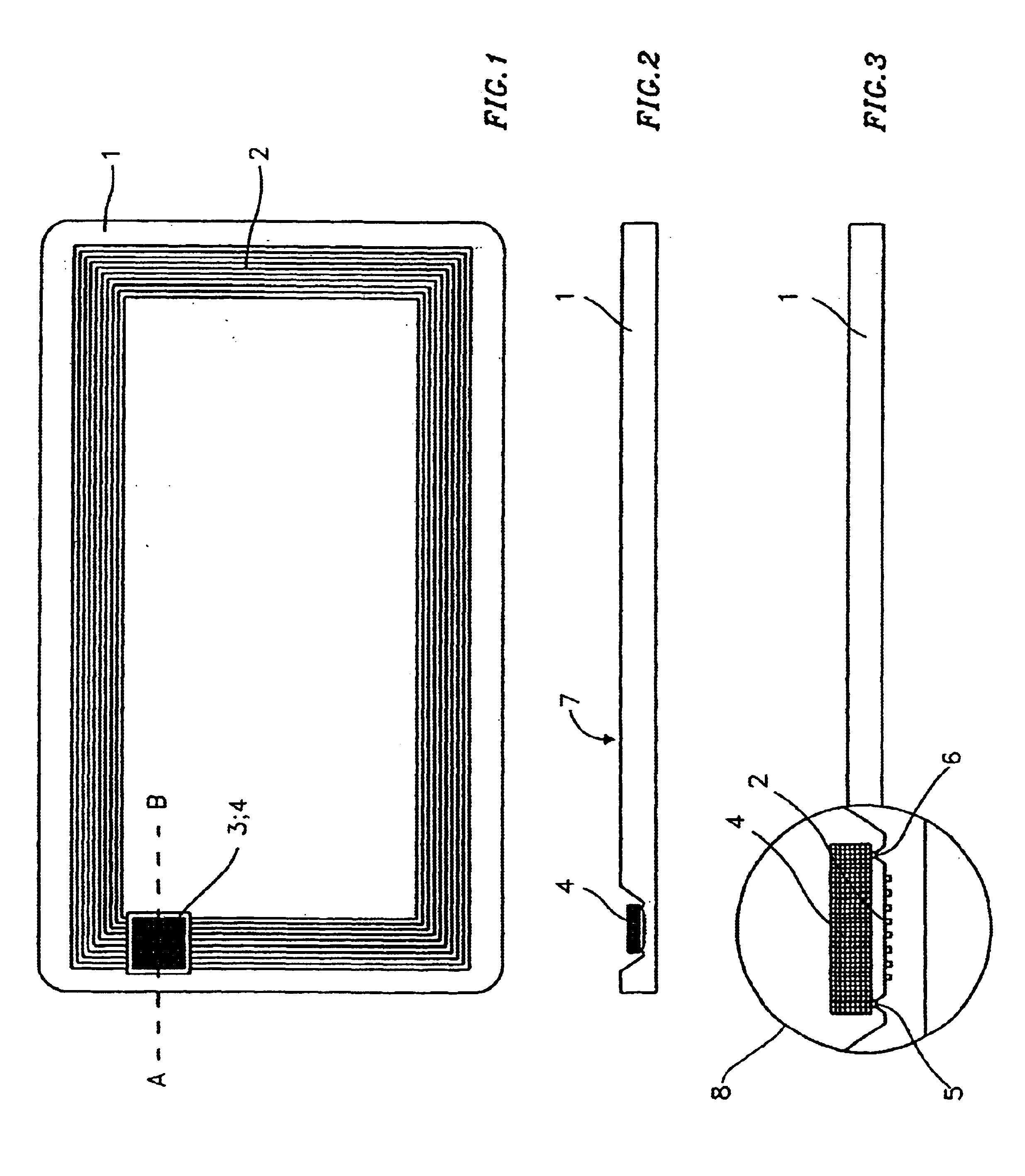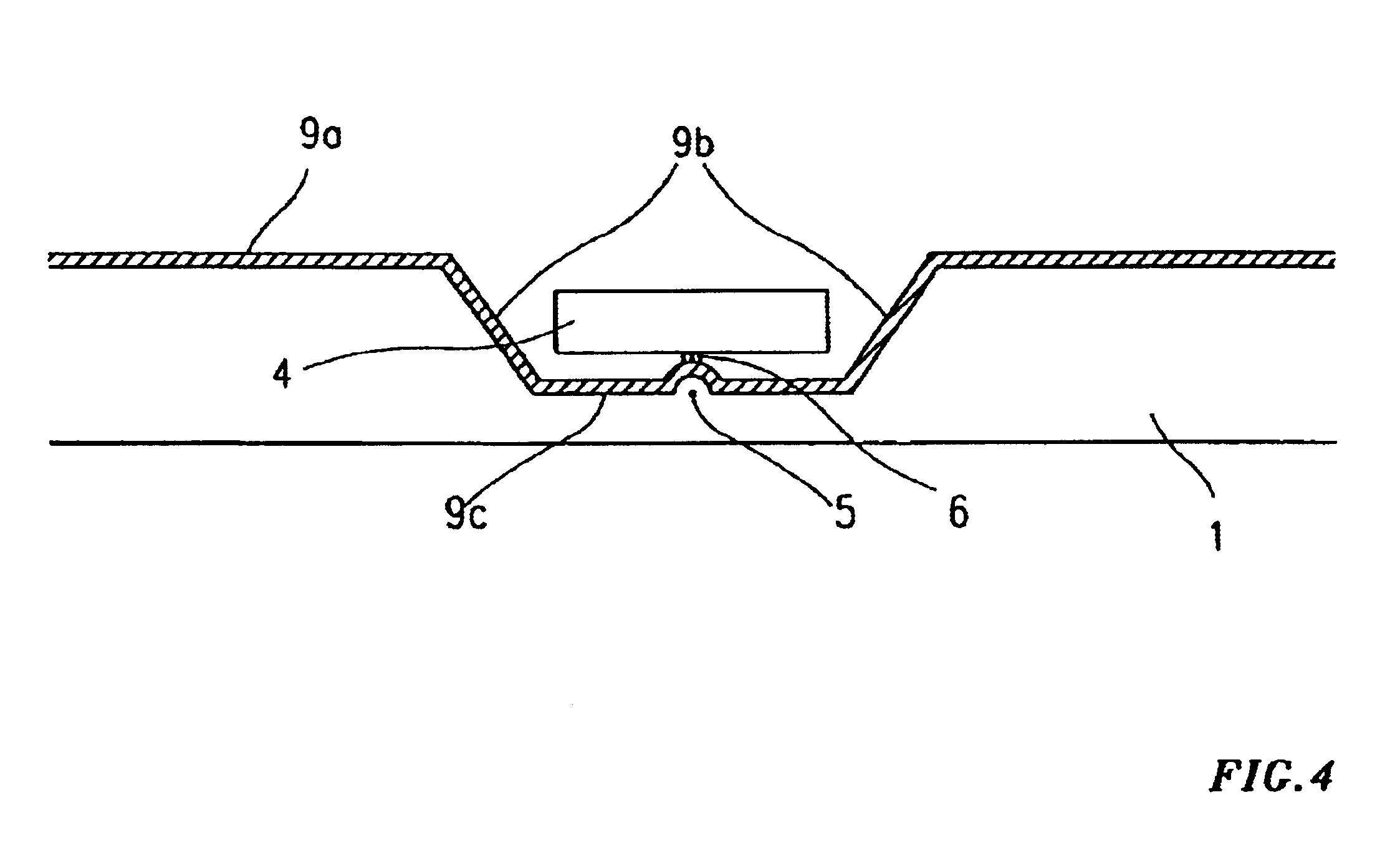Method for producing contactless chip cards and corresponding contactless chip card
a technology of contactless chip and chip card, which is applied in the direction of sensing record carriers used with machines, instruments, etc., can solve the problems of high production cost of coil and chip card, difficult connection between the thick wires of the coil and the naked chip, and disadvantageous thermal and mechanical stability
- Summary
- Abstract
- Description
- Claims
- Application Information
AI Technical Summary
Benefits of technology
Problems solved by technology
Method used
Image
Examples
Embodiment Construction
In one embodiment, the chip card 1 includes precisely a single recess 3 in which a square chip 4 is aligned and contacted with the conductor tracks of the coil 2. The shape and the size of the recess has been adapted to the shape of the chip. From FIG. 2 it can be seen that the depth of the recess has been chosen such that the contacted chip is fully submerged in the recess, i.e. it does especially not project above the card surface 7. FIG. 3 shows an enlarged sectional view 8 of the recess area of the chip card, the plane of section being orthogonal to the conductor tracks (conductor tracks extending in the direction of the normal vector of the sectional area). The bumps 5 formed from the card body material 1, the material 6 used for actual contacting, an adhesive or a solder, and the conductor tracks of the coil 2 are clearly visible in this cross-sectional view. FIG. 4 shows a cross-sectional view through the recess with an impressed coil, the plane of section being orthogonal to...
PUM
 Login to View More
Login to View More Abstract
Description
Claims
Application Information
 Login to View More
Login to View More - R&D
- Intellectual Property
- Life Sciences
- Materials
- Tech Scout
- Unparalleled Data Quality
- Higher Quality Content
- 60% Fewer Hallucinations
Browse by: Latest US Patents, China's latest patents, Technical Efficacy Thesaurus, Application Domain, Technology Topic, Popular Technical Reports.
© 2025 PatSnap. All rights reserved.Legal|Privacy policy|Modern Slavery Act Transparency Statement|Sitemap|About US| Contact US: help@patsnap.com



